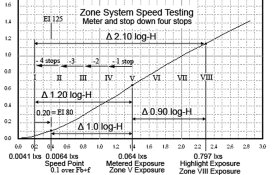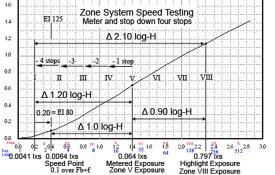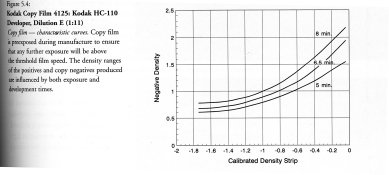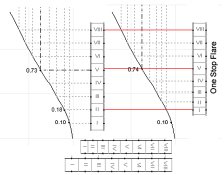Stephen Benskin
Member
Back to why Zone System and ISO "speeds" are different. With the Zone System, you meter a target and stop down four stops. In the example below, the ISO speed of the film is 125. That means the exposure at 0.10 over Fb+f is 0.0064 lxs making 0.8 / 0.0064 = 125. The metered exposure is 8 / 125 = 0.064. Four stops down from the metered exposure is the exposure 0.0041 or too low for the 0.10 density speed point. In order for the four stops down exposure to fall at 0.10 over Fb+f it requires 2/3 stop more exposure. One way to do this is to rate the 125 speed film at 80.

Yes, I am repeating myself, but hopefully in a slightly different way. So Bill, except for experimental error, for general purpose developers this is the primary reason why Zone System EIs and ISO speeds are different.

Yes, I am repeating myself, but hopefully in a slightly different way. So Bill, except for experimental error, for general purpose developers this is the primary reason why Zone System EIs and ISO speeds are different.










